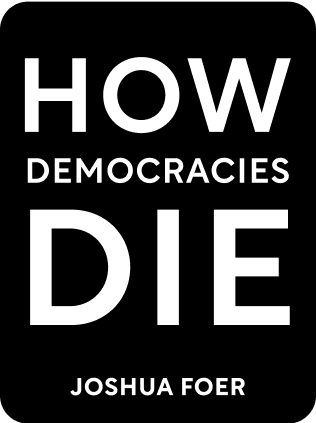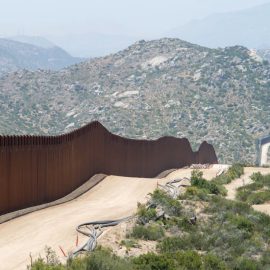

This article is an excerpt from the Shortform book guide to "How Democracies Die" by Steven Levitsky and Daniel Ziblatt. Shortform has the world's best summaries and analyses of books you should be reading.
Like this article? Sign up for a free trial here .
What are some of the biggest political issues in America? Are any of these issues a direct threat to the principles of democracy?
One of the biggest political issues in America is voting rights and voting access. Republicans have worked to make it more difficult for marginalized people and communities to vote since they believe it will help weaken political opponents. Not only is this a major political issue, but threatens the very fundamentals of democracy.
Read more about one of the biggest political issues in America.
Changing the Rules to Gain a Political Advantage
The final step in the authoritarian consolidation of power is to change the rules of democratic competition to neutralize opponents. The most effective tactics are gerrymandering and restricting who is eligible to vote.
Gerrymandering is the redrawing of the electoral map to lock in a political advantage for one party or faction. This is done through “cracking and packing”—diluting the other party’s voting power by spreading their voters across a large number of districts, or cramming the same voters into just a few districts. This makes it extremely difficult for the opposition party to ever win a majority of seats, even when they win a majority of votes.
A good example of a party successfully using extreme gerrymandering to its advantage is Viktor Orbán’s Fidesz Party in Hungary. After winning power in 2010, Fidesz members of parliament redrew the boundaries of parliamentary constituencies to give massively disproportionate power to the party’s base of rural voters. Because of the gerrymander, Fidesz holds two-thirds of the seats in parliament despite winning only 44 percent of the nationwide vote.
Poll Taxes, Literacy Tests, and Ballot Manipulation
Of course, parties can change the rules to disenfranchise their political opponents in a more direct fashion than gerrymandering. A good example of this is the successful efforts by Southern Democrats to marginalize black voters in the late 19th century.
After the US Civil War, emancipation, and the defeat of the Confederacy, black men were given the right to vote in the South for the first time in history. This right was enshrined in the Fifteenth Amendment to the US Constitution.
Black voters overwhelmingly supported the Republican Party, which was the party of Abraham Lincoln and emancipation. Black voter turnout, moreover, was extraordinarily high and it powered the success of the GOP in the former Confederate states. This was an outrage to white voters in these states, who had traditionally given their votes to the Democratic Party. Southern Democrats thus made it their mission to destroy black voter rights.
Under new state constitutions that were eventually drafted in all 11 states of the former Confederacy, Southern Democrats severely curtailed the black franchise. They achieved this by requiring voters to pay poll taxes when they showed up to vote, pass literacy tests, and navigate through deliberately complicated ballots before they could cast their votes. These obstacles made it especially difficult for black voters (who, being formerly enslaved people, were largely poor and illiterate) to exercise the franchise. These new state constitutions effectively killed true democracy in the South for over a century and made the region a one-party authoritarian state.
The Demise of Big-Tent Parties Leads to Further Political Issues in America
While these events were happening, major structural transformations were also reordering the composition of the parties themselves. These structural changes both reflected and contributed to the radicalization of American politics.
For much of the 20th century, both major parties were big-tent coalitions, with their support cutting across religious, ethnic, geographic, and ideological lines. The Democratic Party counted conservative white Southern Protestants, educated urban liberals, and working-class Irish and Italian-American Catholics as key voting blocs; the Republican Party, meanwhile, contained conservative midwesterners, but also liberal New Englanders in its coalition.
As we discussed in Chapter 6, the long era of bipartisan cooperation that characterized 20th-century American politics largely rested on the bipartisan acceptance of second-class citizenship for African-Americans. But it also depended on the relative heterogeneity and non-uniform nature of the two major parties.
This arrangement began to unravel as a result of the success of the civil rights movement, which began making major gains in the decades following World War Two. Major pieces of legislation like the Civil Rights Act of 1964 and the Voting Rights Act of 1965, both of which were signed into law by Democratic President Lyndon Johnson (and which were opposed by 1964 Republican presidential nominee Barry Goldwater), permanently stamped the Democratic Party as the party of civil rights. This prompted a major realignment of US politics, as white Southern Democrats began moving into the Republican Party as a reaction against civil rights gains.
(Shortform note: Aware of the shifting political dynamics, President Johnson is said to have remarked to an aide as he signed the 1964 Civil Rights Act into law, “We’ve lost the South for a generation.”)
Republican politicians like Richard Nixon and Ronald Reagan welcomed and encouraged this development, adopting a “Southern Strategy” of making coded appeals to racially reactionary whites through their rhetoric against school busing, welfare spending, and urban crime. The GOP became the party of white racial reaction and resentment.
In turn, racial minorities, new immigrants from Asia and Latin America, and liberal white voters began to find their natural home within the Democratic Party—whereas, previously, they had been scattered across both parties. As the decades wore on, liberals neatly sorted into the Democratic Party and conservatives sorted into the Republican Party.
Ever since, the Republican Party has worked to make voting more difficult for Americans. This is not only an attempt to strip voting rights from Americans, but is also a threat because it uses pre-existing government and political systems to harm a political opponent. It’s one of the major political issues in America and is a direct threat to democratic principles.

———End of Preview———
Like what you just read? Read the rest of the world's best book summary and analysis of Steven Levitsky and Daniel Ziblatt's "How Democracies Die" at Shortform .
Here's what you'll find in our full How Democracies Die summary :
- How shared norms are essential for preserving democracy
- Why the Trump presidency threatened those shared norms
- Why democracy goes beyond individual leaders and parties and must be a shared enterprise among committed individuals






